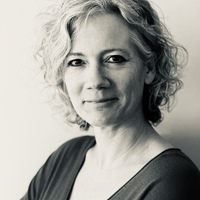‘Women’s rights are human rights!’ This notion may seem self evident, as the international system for the promotion and the protection of human rights that was installed under the auspice of the United Nations (UN) builds on the idea of... more
‘Women’s rights are human rights!’ This notion may seem self evident, as the international system for the promotion and the protection of human rights that was installed under the auspice of the United Nations (UN) builds on the idea of equality in dignity and rights of men and women. Yet, as was convincingly showed by critics of this system, it is not. In 1993 a lobby of women’s rights activists and organisations from all over the world gathered in Vienna at the World Conference on Human Rights to make clear to the 171 states represented there that the international human rights system ignored blatant human rights violations that occur on a daily basis in the lives of women from all over the world. The states represented at the World Conference recognised this deficiency of the international human rights system and called upon the monitoring bodies of the mainstream international human rights treaties to include the status and human rights of women in their deliberations and findings. This study examines whether two of these monitoring bodies: the UN Human Rights Committee (HRC) and the Committee on Economic, Social and Cultural Rights (CESCR) have taken up this call. It thereby focused specifically on matters that affect women’s physical integrity. The study shows that the HRC and the CESCR make good use of the possibilities within their mandates to address issues that affect women’s physical integrity: they address not only issues like rape and domestic violence, but also for example female genital mutilation, unsafe abortions, and lack of access to contraceptives. It is in this respect interesting to note that the monitoring bodies do not consider abortion to be a violation of any human right, but, on the contrary, recommend states that have general prohibitions on abortion to amend their laws and allow for abortion under certain circumstances. Moreover, the HRC and the CESCR generally formulate obligations for states parties that take into account the gender-specific form, circumstances and consequences of these human rights abuses. But the HRC and the CESCR could and should do more. Only in a few instances do the bodies expressly link issues like rape, female genital mutilation, and trafficking of women to discrimination of women in societies. Hence, the recommendations of the HRC and the CESCR generally do not request the states parties to tackle the root cause of human rights abuses and constraints: the subordinate position of women in society. Further action is required to overcome this deficit. In this, NGOs and academics also have an important role to play, as they should make the bodies aware of the discriminatory background and nature of specific situations and issues and could present them with ideas on how best to tackle these underlying causes. What is clear is that the request of the 1993 World Conference on Human Rights is not a short-term assignment for the monitoring bodies, but rather is a process that will be ongoing for as long as gender inequality exists. The commitment of not only UN agencies, but also academics, and NGOs is required to transform the international system so as to ensure that it fully accommodates and responds to human rights abuses and constraints that are typical of women’s lives, now and in the future
